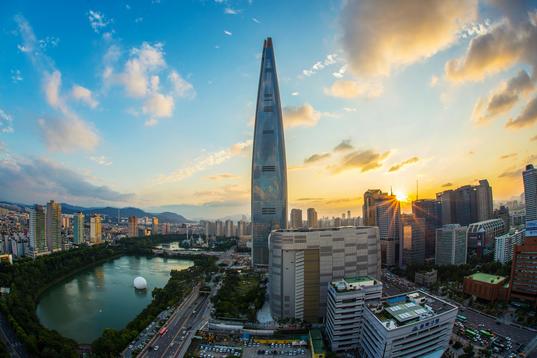“Asia will be the furnace in which a new era is forged”, argued McKinsey in a report last year.
The region increasingly represents the world’s majority for everything from product manufacturing to innovation and the number of new patents granted.
Such a leading role in crucial parts of the global economy provides Asian countries and their companies with an opportunity to shape the future economy like never before, in sectors ranging from automotive to shipping, electronics to renewable energy.
And any future needs to be a sustainable, green one. When it comes to decarbonising the global steel industry, Asia’s leading role stands out once more. The numbers really speak for themselves.
Asia is the steelmaking centre of the world
Asia produces and consumes 70% of the world’s steel. Given steelmaking currently accounts for a whopping 8% of greenhouse gas emissions, this giant slice of the steel pie leaves Asian steelmakers responsible for almost 6% of emissions. That’s three times greater than the emissions from the global aviation industry.
Simply put, the road to global net zero requires urgent emission reductions from Asian steelmakers in countries such as China, India, South Korea, and Japan - especially as steelmaking in regional steel powerhouses like China and Japan currently has an average emissions intensity roughly twice that of the USA.
So, steelmaking is another area where Asia can shape the future global economy. With the scale to do so, the region can indeed be the furnace in which a new era of steelmaking is forged.
Global steel trade dynamics will be felt across Asia
Plenty of the steel and steel-containing products which the region makes are shipped and destined for markets around the world. But the global trade landscape is shifting. The emissions intensity of steel now increasingly finds itself under the microscope of regulators.
The EU’s incoming Carbon Border Adjustment Mechanism, coupled with the bloc’s ongoing discussions with the USA regarding the ‘Global Arrangement for Sustainable Steel and Aluminum’, are creating lower emission steel trade zones which will penalise products manufactured with a heavy reliance on fossil fuels.
Opportunities in the transition
So, steel decarbonisation for Asia is not just a matter of climate necessity. Instead, it’s increasingly becoming a competitive one. By many accounts, green steel will be cost-competitive by the 2030s. And businesses are increasingly telling their steelmakers they want a steel industry which will provide them with green steel and thereby help them meet their net zero targets. Since our Climate Group Asia Action Summit last year, we’ve welcomed Hang Lung Properties as our 2nd Asia-headquartered member to our SteelZero initiative. The message of demand from Asian businesses is growing.
Steel producers and consumers can futureproof their operations and national economies while gaining a competitive edge by embracing this emerging standard and tapping into the expanding market for net zero steel.
But to ensure we can do away with fossil fuels for good, and to ensure Asia can become the furnace where a new era is forged, steel needs to be forged not in blast furnaces with fossil fuels, but with renewable electricity and green hydrogen. With over 78% of blast furnace capacity in China, 76% in Japan and 72% in South Korea needing to be relined by 2030, we must be unapologetically impatient today to shape every investment and business decision to be laser focused on achieving a net zero steel industry.
The direction of travel must be set and the climate and economic opportunities must be made clear. Collaboration across the entire value chain, involving not only steelmakers and steel users, but also policymakers and financiers, is key to doing so and making the transition happen fast.
